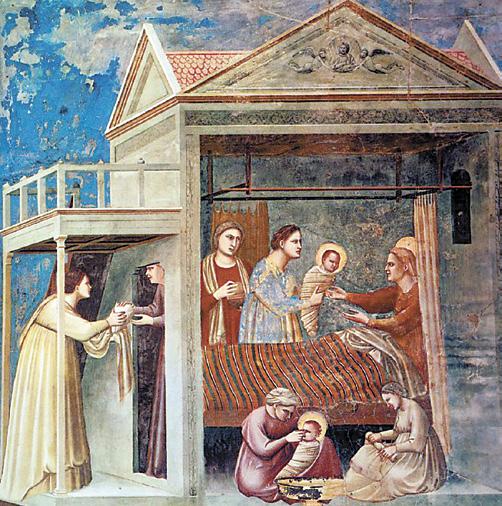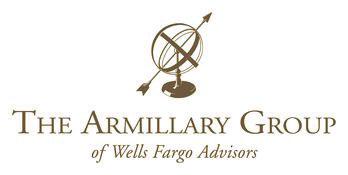
4 minute read
from 2 to
MARIAN ART SERIES ‘The Birth of the Virgin’
Giotto (c. 1300), Arena
Advertisement
TRICIA KENT SPECIAL TO THE CATHOLIC NEWS HERALD
In Padua, Italy, near an Augustinian monastery, a small church/museum known as the Arena or Scrovegni Chapel contains some of the earliest examples of a profound artistic shift that helped define Christian and Western art for centuries. A cycle of frescoes commissioned to the late medieval artist Florentine Giotto do Bondone cover the walls inside the chapel.
Giotto, as he is known, was acclaimed even in his day as a master who drew “according to nature.” At its beginnings, much of Christian art took its style from Rome, but with the collapse of the empire, through war and iconoclasm Christian art was largely inspired from the East. For most of the first millennia Christian art was characterized by compositions that were generally flat and hierarchic, concentrating the viewer in prayer and veneration through contemplation of the divine portraiture of holy icons. Giotto’s works ushered in a new standard, a new technique, and a new focus on sacred tradition and what it tells us about the role of Our Lady.
Giotto’s art was the art of fresco, a technique of mural painting usually done on wet plaster. This had been well known and popular among the Greeks and Romans, but persecution and portability had soon led Christians to a different approach. It isn’t until the dawn of the 14th century that we finally see the large-scale return of fresco.
Giotto preferred fresco-secco painting on dry plaster using a binding medium – usually egg. It gave him more time and freedom than an entirely wet technique, allowing him to paint expressive faces full of human emotion. His works became a glimpse into moments in the historic narrative of salvation, replete with blue skies, trees, birds and all the earthly realities of the Incarnation of Our Savior.
Among Giotto’s frescoes in Padua are a series of images depicting scenes from the life of the Virgin Mary – beginning with the non-scriptural narrative involving the tale of Mary’s parents, St. Anne and St. Joachim. These accounts had long been passed down in apocrypha and preserved as part of the deposit of our faith. Now, in a chapel dedicated to Mary, we see the historic story fully played out in time and space for perhaps the first time in a visual media. Long held Christian belief later proclaimed as dogma is brought alive on a scale for all to see and understand. Mary, chosen from the beginning to be the Theotokos, the Mother of God, is immaculately conceived in the womb of St. Anne and born into the world – an event of historic significance celebrated from the earliest centuries.
Presented in a polyscenic image, the frescoes show three moments in time: the Nativity of the Blessed Virgin, the New Eve whose “yes” will lead to the Word made flesh, and the salvation of humanity.
TRICIA KENT is a parishioner of St. Thomas Aquinas Church in Charlotte.
At www.faithmorepreciousthangold.com: Read more of the monthly art series curated by Tricia Kent
Prayer for the 50th anniversary
The 50th anniversary year will bear great spiritual fruit if we ask God for the graces we hope to receive. Please offer the 50th anniversary prayer daily for many graces to be poured on our diocese during this jubilee anniversary:
Heavenly Father, accept our humble prayer of praise and gratitude as we joyfully celebrate 50 years as the Diocese of Charlotte. Throughout our history the faithful of western North Carolina, under the watchful care of esteemed bishops and abbots, have been nurtured by Your providential hand. Confident that You invite Your children to implore Your constant blessings, we pray that You continue to pour forth Your heavenly grace upon us. With filial affection and devotion, we further ask that You look kindly upon the prayers we seek through the intercession of our venerable patroness, the Most Blessed Virgin Mary, who with motherly attention tends to the needs and concerns of the Church. We ask this through our Lord Jesus Christ, Your Son, who lives and reigns with You in the unity of the Holy Spirit, God, forever and ever.
Amen.
Prayers & Devotions
The 50th anniversary theme, “Faith More Precious Than Gold” (1 Peter 1:7), encourages use of the Church’s tried-and-true prayers, devotions and sacramentals, which for centuries have brought people closer to God. Let us confidently ask for the graces we hope to receive from God as we celebrate the founding of the Diocese of Charlotte. Holy Mary, Mother of God, pray for us! June prayer intention
For vocations to the priesthood. May the Lord give courage and strength to those who are being called to the ministerial priesthood, and may those who are called respond generously and faithfully.
Saint of the Month
St. Charles Lwanga Feast Date: June 3
At www.catholicnewsherald.com: Read more about St. Charles Lwanga and his companions, martyred for the faith

Comprehensive Private Wealth Management
We believe in a consultative approach to investing – one that provides a clear strategic vision and a dedicated focus on clients’ goals with an emphasis on objectivity.
Investment and Insurance Products are: • Not Insured by the FDIC or Any Federal Government Agency • Not a Deposit or Other Obligation of, or Guaranteed by, the Bank or Any Bank Affiliate • Subject to Investment Risks, Including Possible Loss of the Principal Amount Invested
Wells Fargo Advisors is a trade name used by Wells Fargo Clearing Services, LLC, Member SIPC, a registered broker-dealer and non-bank affiliate of Wells Fargo & Company. CAR-0322-01892

